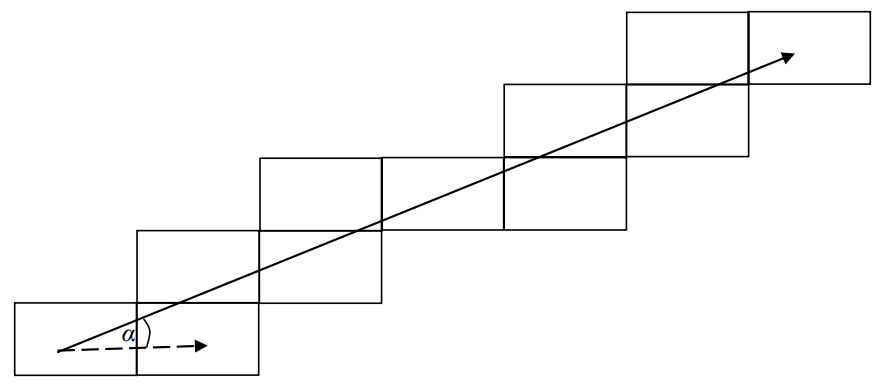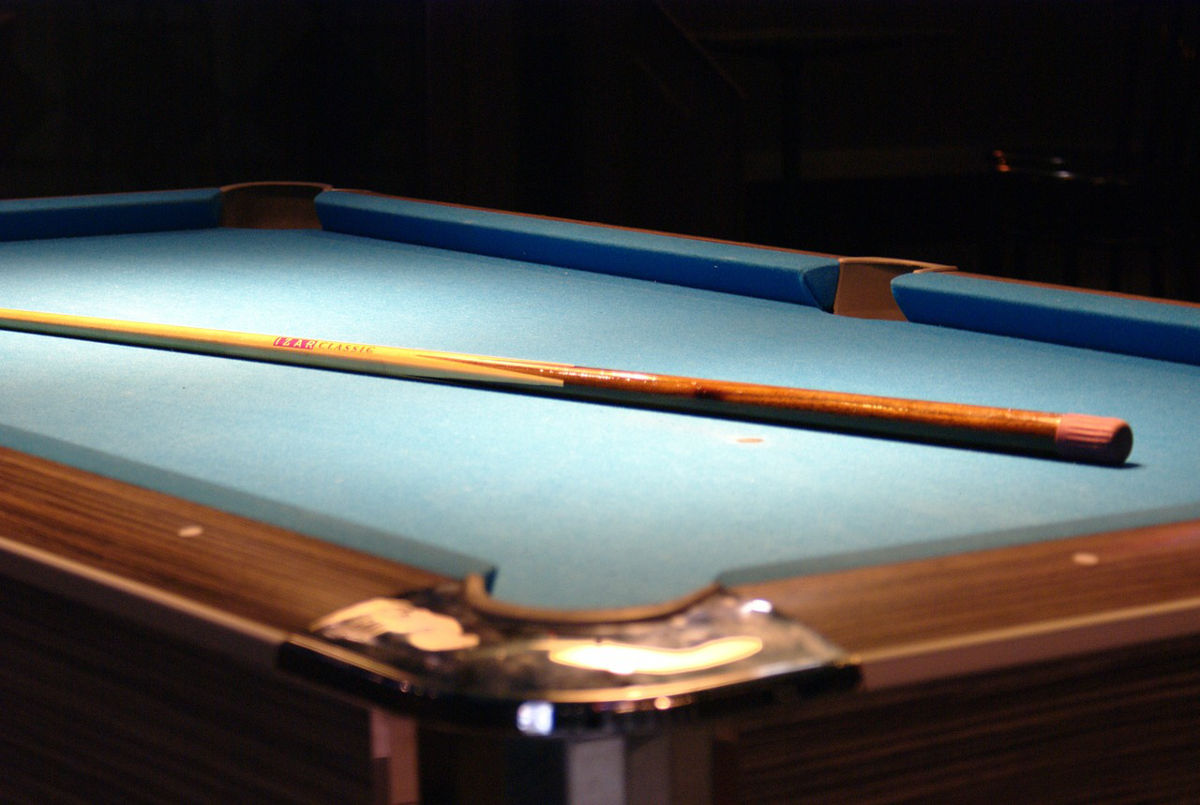
When the ball hits a cushion, it bounces back, with the angle of incidence equal to the angle of reflection. White writes, “Why not reflect the table instead?” Conceive that the ball travels in a straight line, and that each time it reaches a cushion it travels across a boundary and onto a new table.
“So, we are now in a position to severely limit the allowable values of the angle, α, even if we cannot completely define those angles. The condition for cyclic motion is that the ball travels a certain number of tables up (not including the table the ball starts on), say, p tables, and so many tables to the right, say q tables. Two degenerate cases would be α = 0, in which case p = 0, and α = π/2 when q = 0. For the cases in between, 0 < α < π/2 and p > 0 and q > 0 but they must both be whole integers. In summary, we can now state that the ball will cycle on the billiard table if, and only if:
i. α = 0°
ii. α = π/2 = 90°
iii. tan α = p/q (i.e. is a rational number)
“As I stated, this is not a complete solution, but an interesting insight into a heuristic method. In justification, even if the perfect solution could be provided, it would be of no practical use to players of the game!”


